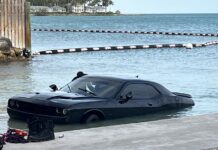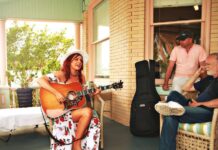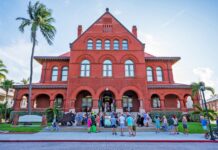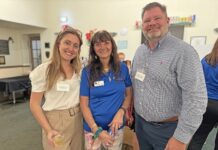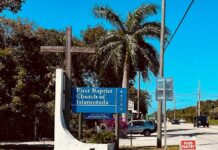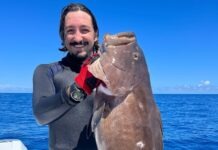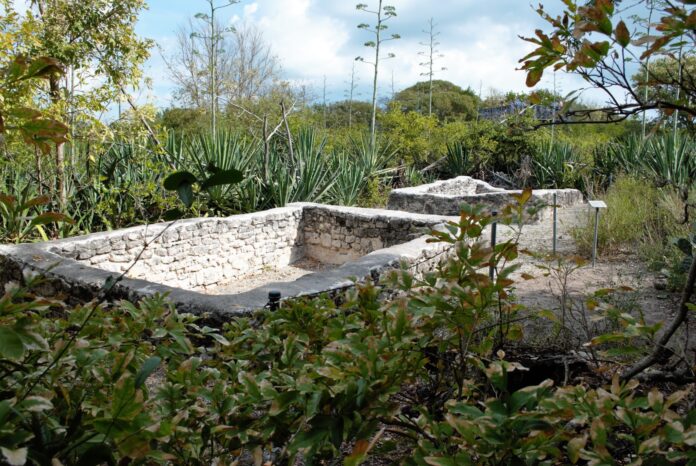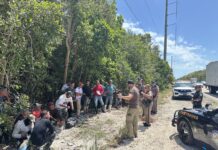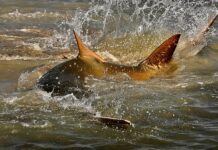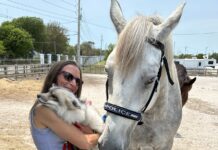Several months ago, I was invited to one of the local Key Largo schools to talk with some students about the use of cisterns in early pioneer life — what they did, how they were built, and why they were important.
What I told them was that cisterns were built to collect rainwater. In those days, there was no faucet spouting water at the turn of a handle or a convenient store nearby where water was sold by the bottle or jug. While barrels of water were shipped in, having a local source to help pioneers navigate the dry season was essential to everyday living. Cisterns served as a primary source for the much-needed resource.
The cisterns built in early pioneer history were constructed using concrete produced from locally sourced materials, including seashells. It was called tabby concrete and was created by burning shells like conch to extract the lime necessary to cement the formula. After the shells were burned in a pit, the crushed shells, the lime they produced, and the ash were mixed with water and sand to create a mixture that created an island-styled concrete.
Sometimes, the cisterns were built adjacent to a house or other structure; sometimes, those structures were built on top. In either case, the cistern was filled via a gutter system that collected rainwater after it splattered against a sloped roof. The droplets slid down the slanted wood and pooled in gutters before flowing downstream and emptying into the cistern.
They were a way of life in the Florida Keys for longer than you might think and were still being built and used into the 1940s. The freshwater pipeline delivering convenience from a tap did not arrive along the chain of islands, at least those connected by the Overseas Highway, until 1942. Fun Florida Keys fact: it takes 10 to 14 days for a drop of water to flow from the aqueduct’s wellfield in Homestead to Key West.
The good news is that, at least in the Keys, the relatively modern convenience of fresh water no longer relies on using cisterns as a primary source. The better news, at least from a history nut’s perspective, is that a handful of cisterns, some dating back to the 1830s (as is the case of the square cisterns found on Indian Key), are still standing relatively intact. The Indian Key cisterns, at least the square ones, were built with tabby concrete. The government made the three red-bricked masonry cisterns on the island in 1840.
The cisterns still standing up and down the Florida Keys are a reminder of life on these islands before fresh water, mosquito control, air-conditioning, the highway or even Henry Flagler and his Over-Sea Railroad roared across the islands. Sadly, many have been bulldozed or otherwise destroyed in the name of progress.
Certainly, real estate is a commercialized premium here in paradise, but preserving local history is important, too. People come to the island chain for the clear waters, local seafood (though it is getting harder to come by), fishing, diving, snorkeling and picturesque sunset views — but the local history and breadth of it are not just extraordinary but worth celebrating. However, “progress” is “progress” and the latest historic cistern likely to become a victim of it was built by Edmund Albury in 1897.
Like many early pioneers, Albury moved to the Keys from the Bahamas. He settled at Key Largo’s Rock Harbor, where he farmed pineapples, Key limes and tomatoes. The tomatoes were known as Key Largo globe tomatoes and became a primary cash crop. By 1923, 56 individuals or companies grew the globe tomato on 312 acres of Key Largo. Unlike tomatoes grown on the mainland, the Key Largo variety had a thicker skin and was juicy, sweet and better able to withstand the packing and shipping element of farming.
Edmund Albury was farming tomatoes on six acres of his land, but he was also a fisherman who built a fish house over the aforementioned cistern on his oceanfront property where he and his wife, Elizabeth, had 10 children. Their eighth child, Calvin, grew up to be a legendary fishing guide — and a favorite of the former president and bona fide fisherman Herbert Hoover.
Calvin’s daughter, Carol, asked me to visit the family property and see the cistern her grandfather built 126 years ago. It still holds water. Unfortunately, the parcel of Albury land on which the cistern was built has been sold, and the fate of the cistern has been all but sealed.
The story is nearly as old as time: the old is cleared away to make room for the new. It is one of the reasons a dedicated, though small, group of people has historically worked on recording, restoring and remembering the past so that, at the very least, the children of tomorrow will have the opportunity to learn about the history of this string of islands that is so much more than a vacation destination.
One of the people who worked to preserve the local history was Calvin Albury’s wife, Lenora Albury, who, in 1976, helped to establish the Historical Preservation Society of the Upper Keys. She also worked to create the first Key Largo library, where she served as its branch manager for three decades. In the case of the historic cistern on what was once the Albury property, instead of knocking it down, it would be amazing if it did not become just another memory and, instead, was honored with an interpretive plaque or some other way of remembering the cistern and the family’s tremendous history. Wishful thinking, sure, but once in a while, wishes come true.
